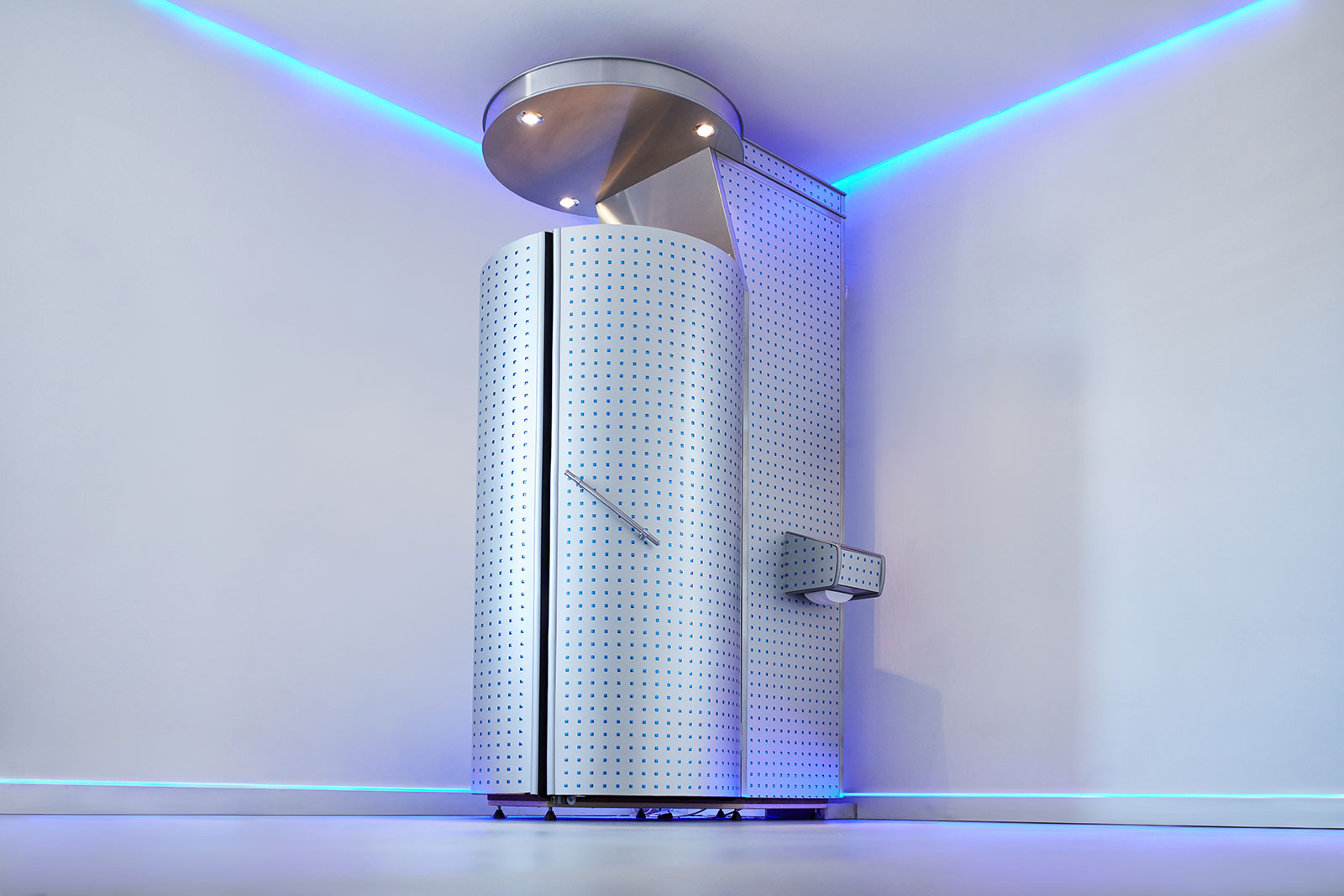Chemotherapy drugs do their best to kill off cells, regardless of whether or not they are cancerous, and our immune system fights like hell to preserve what is functioning and destroy what is not. But cryotherapy, a treatment gaining popularity in the world of complementary medicine, has proven to assist our immune system in doing what it does best: help us heal.
Cryotherapy is the use of very cold temperatures (as low as -150 degrees Celsius) to invoke an immune system response to promote healing. The use of cryotherapy (also known as cryosurgery or cryoablation) for medicinal purposes can be traced as far back as the early 19th century. James Arnott was the first documented physician to use cold temperatures to destroy tissue. A 2001 overview in the Journal of the Royal Society of Medicine details the history: Arnott found very cold temperatures “will arrest every inflammation which is near enough to the surface to be accessible to its influence,” and he was said to have treated breast cancer, uterine cancers and some skin cancers with this method.
There are a variety of different versions of cryotherapy—from whole-body cryotherapy, which can offer benefits to both the healthy and sick, to cryosurgery, a cancer treatment administered in a clinical setting.
Whole-body cryotherapy can be accessed at clinics around the country, at places like The CryoBar, which has three locations in the city of Chicago. Sessions last around three minutes: Clients enter a chamber, leaving their head and neck exposed. According to Andrea Fouste, manager at The CryoBar Lincoln Park, cryotherapy stimulates collagen production (to help heal surgical scars), sends a rush of feelgood endorphins throughout the body and reduces inflammation. This benefit is especially pertinent to cancer fighters and thrivers as chronic inflammation causes DNA damage than can lead to cancer, according to Cancer.gov.
“It’s all about inflammation reduction,” Fouste says. “So helping with those pains and aches and things like that.” The cold temperatures send blood to the body’s core, where it is essentially cleaned of toxins as it runs through the lymphatic system. “Your body’s able to see, ‘Oh, that’s not supposed to be here. Let’s get rid of it,’” Fouste says. After the session, as the body readjusts to room temperatures, the blood returns to the rest of the body, allowing adrenaline and endorphins to spread throughout the body. “A lot of people do it because it helps with mood, so you’re going to feel happier, even more energized, more awake, more ready to go,” Fouste says. “Sometimes people who are doing cancer treatments need that sort of boost.”
Today, Dr. Winston Barzell of Sarasota, Florida, is a big proponent of cryotherapy in his urology practice, where he most typically treats prostate cancer. “If we freeze the tissue to -40 degrees Centigrade, and keep it for three minutes at that level, we kill cancer cells,” Barzell says. After two freeze-thaw cycles which essentially destroy cells through intracellular/extracellular fluid shifts and membrane disruption (a process taking about 25 minutes), the procedure is over and the patient is free to head home after appropriate, post-op recovery. A 2019 paper in the journal Breast Cancer: Targets and Therapy says that the efficacy of cryotherapy-related treatments is based on the “cytotoxic effects of cold that produce both instant and delayed destruction of cellular ultrastructure,” which occurs when tissues are frozen to “lethal temperatures lower than −40°C.”
Even for a patient with an incurable disease, there is always hope.
Barzell has been using cryotherapy to treat prostate cancer patients for almost 20 years, since 2001. “When I first started doing cryo, I wasn’t convinced that it worked,” Barzell begins. “I biopsied the patients at one year and two years after the cryo to see if the cancer was gone, [because] I was concerned that I was rendering a treatment that, at that time, wasn’t very popular, [and] maybe it wasn’t effective.” But, fortunately enough for Barzell and his patients, “I was amazed by how well the biopsies turned out,” he says.
Barzell sees two types of cryotherapy patients: prostate cancer patients who have not received any treatment, and those who underwent radiation which ultimately failed. Radiation is a popular treatment for prostate cancer producing good results, but not for everyone. “After radiation therapy, [cryotherapy] is, in my opinion, the best treatment available,” says Barzell. He notes that about one-third of people diagnosed with prostate cancer will receive radiation, and “the failure rate of radiation, depending on what you read, is anywhere from 15 to 40 percent.” This is where cryotherapy treats what radiation could not.
But this is just one example of how cryotherapy is used in the cancer treatment world. Retinoblastoma, a rare cancer of the eye, most commonly affects young children. Cryotherapy is a common treatment option because of its ability to target the tumor directly with little risk of damaging other parts of the eye.
Cryotherapy is also gaining traction as a treatment for early-stage breast cancers. The Breast Cancer: Targets and Therapy paper examines current evidence, noting the favorability of cryoablation in these instances. Cryoablation is performed using hollow needles, known as cryoprobes, to deliver chilled fluids directly to their destination (in this case, the tumor in the breast). Cryoablation requires little anesthesia, is minimally invasive, and results in little to no aesthetic changes with a short recovery time. As well, “it is a repeatable procedure in case of local relapse or incomplete ablation, [and] it does not interrupt other systemic therapies,” the paper states.
It’s proven to be effective. A study led by Kenneth R. Tomkovich, M.D., a radiologist at Princeton Radiology and director of Breast Imaging and Interventions at CentraState Medical Center in Freehold, New Jersey, found when cryotherapy was used to treat patients with low-risk breast cancer, only one out of 180 patients had a cancer recurrence in the following four years. A 2016 report from the M.D. Anderson Cancer Center points out additional benefits to cryosurgery: “It appears to stimulate an anti-cancer immune response,” says Dr. Rosa Hwang. The hope is that cryoablation would stimulate the body’s immune response, leading the immune system to recognize the disease. If the cancer were to come back, the body could fight it off naturally. According to M.D. Anderson, “Researchers have confirmed this revved-up immune response in mice, and they’re preparing to test it on people.”
Whether you are an athlete seeking cryotherapy to soothe sore muscles, a cancer patient aiming to reduce inflammation after cancer treatment, or someone considering cryosurgery as part of your cancer treatment, cryotherapy is a low-risk option taking advantage of the body’s natural immune response to promote healing.







